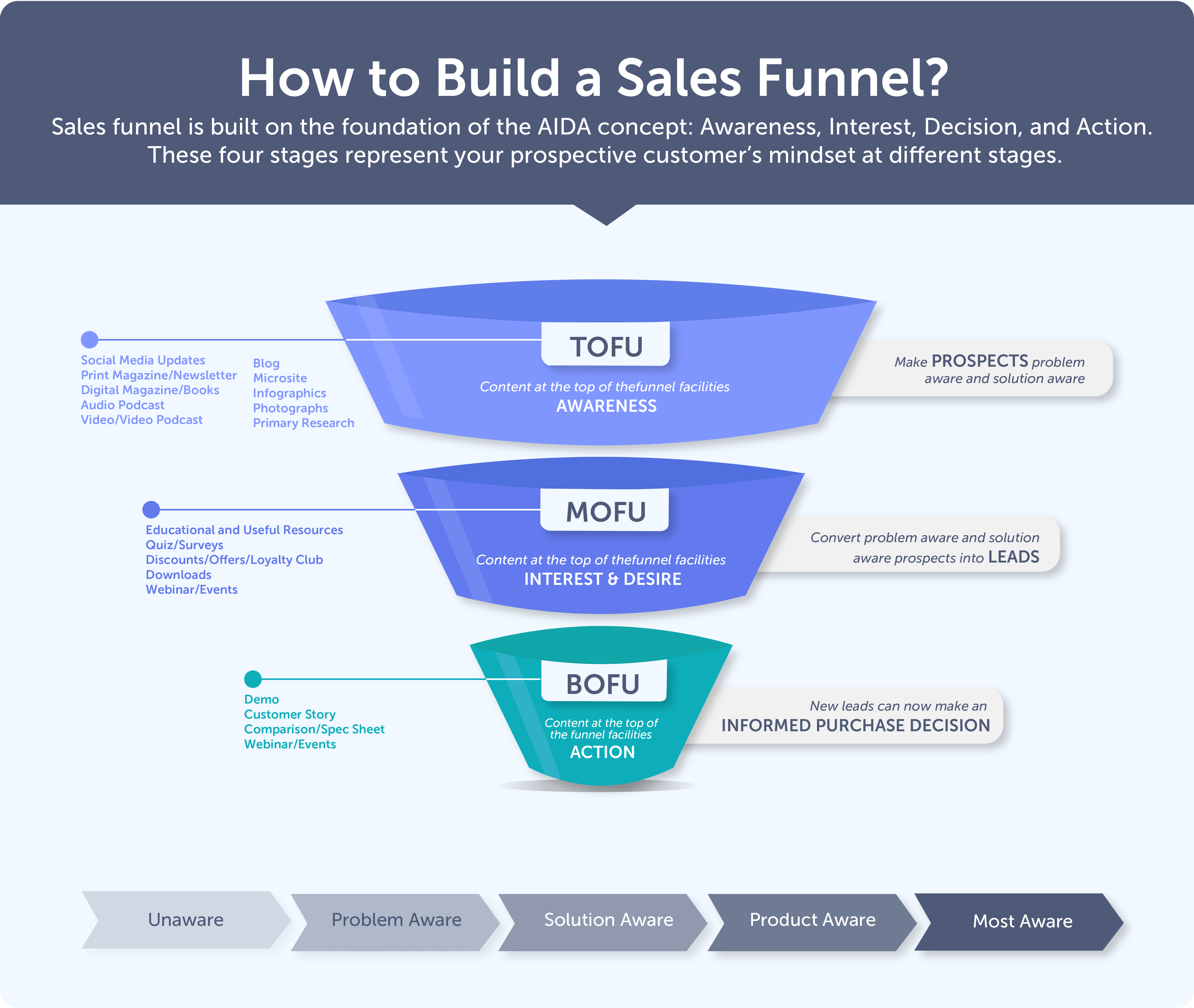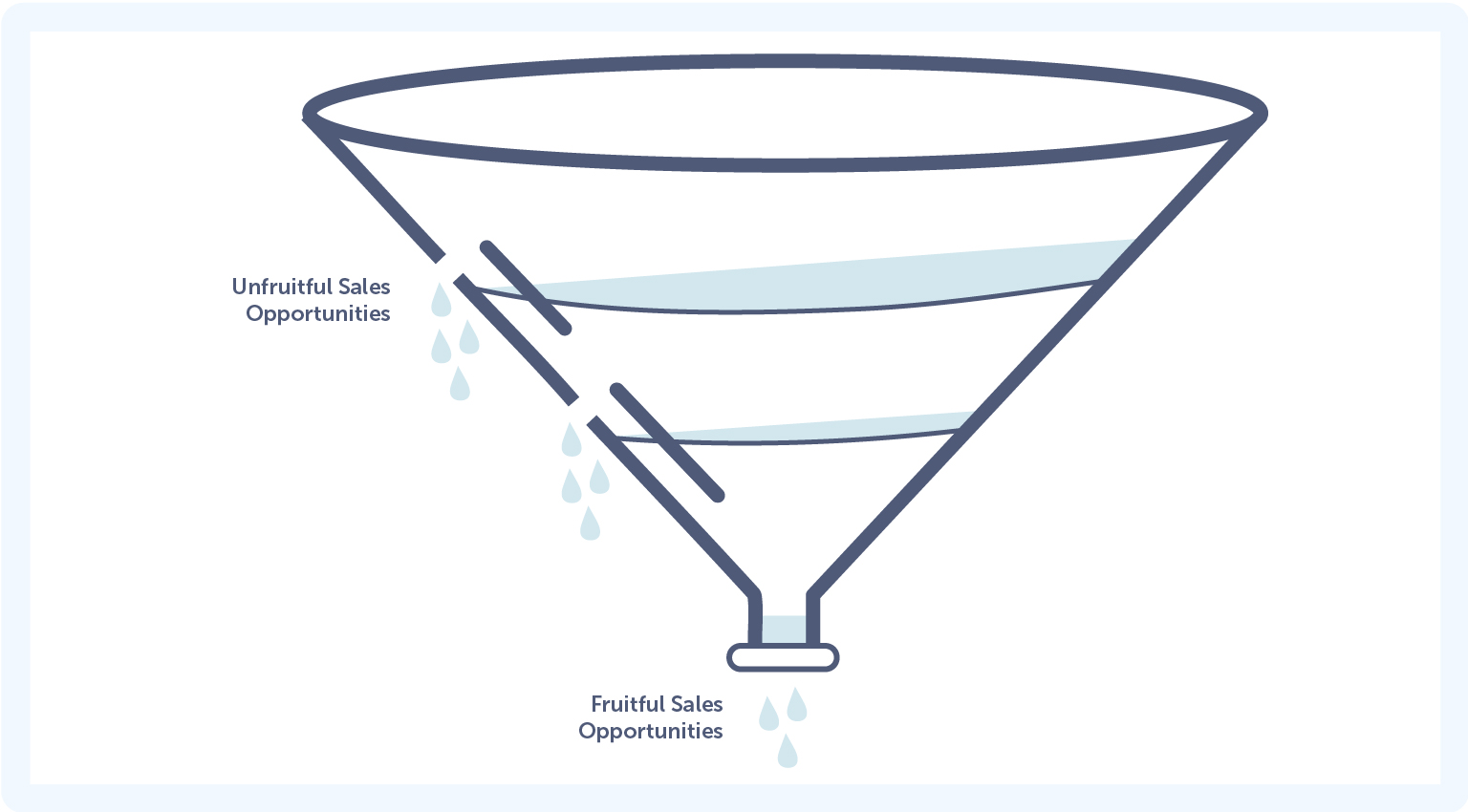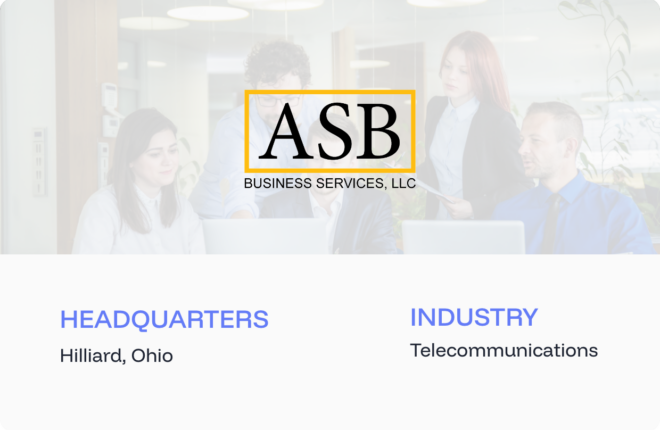Ever feel like you are doing all you can to build a pipeline, but leads just aren’t turning into revenue?
You follow all the best practices, you’re creating authoritative content, providing a clear call-to-action, and your form only asks for the bare necessities but you’re not seeing the expected results in terms of sales or revenue generation.
You don’t need to worry as you are doing the right thing except…
… Lead nurturing through a sales funnel.
Creating an effective sales funnel is one thing that very few successful companies focus on and do right to ensure they are reaching the right audience, at the right time, and with the right content.
Companies that effectively nurture their leads see more qualified leads vs companies without optimized processes. And those who take the time to nurture and grow those customer relationships see 50% more sales leads at a 33% lower cost per lead.
So, if you haven’t considered creating a sales funnel in your sales process, let’s get started. In this article, you will learn the core concepts of the sales funnel and the different stages associated with it.
Why is it Common for Companies to Think of Themselves in Terms of a Funnel?
Companies often perceive themselves as a funnel because it represents the customer journey from initial awareness to eventual conversion. The funnel model visualizes how prospects move through different stages, such as awareness, consideration, and decision-making. It helps companies understand the customer’s mindset at each stage and allows them to implement targeted marketing strategies. Viewing the business in terms of a funnel aids in identifying bottlenecks, optimizing the customer experience, and maximizing conversions.
What is a Sales Funnel
There are numerous articles explaining what a sales funnel is and you’ve probably seen your fair share of them. However, we’ll still briefly touch on the essentials.
By definition, a B2B sales funnel is the most effective way to check where your prospects are in their decision-making process and plan your next actions accordingly.
Read the highlighted text again.
Why?
Because this is what most of the B2B companies fail to do or ignore while generating and nurturing leads.
68% of businesses admit to never measuring their sales funnel. This level of deliberate ignorance combined with minimal profit returns suggests that businesses are struggling to reap the benefits of implementing a robust sales funnel strategy.
How Can I Use a Sales Funnel for a B2B Business?
Sales funnels enable businesses to visualize each step prospects take on their way to conversion. Each stage is a micro-conversion that can be improved to enhance overall conversions; if one of these phases has a higher-than-expected drop-off rate, it can be studied to discover what’s wrong and try out potential modifications.
What Advantage Does a Sales Funnel Offer to B2B?
The sales funnel offers a lot of advantages! However, here are the top five advantages of keeping a sales funnel:
- Enhanced productivity
- Predictability of results
- It segments and standardizes the sales cycle based on the predictability of the outcomes
- Real-time tracking of the status of each sale
- Improved customer experience
How to Build a Sales Funnel?
A sales funnel is built on the foundation of the AIDA concept: Awareness, Interest, Decision, and Action. These four stages represent your prospective customer’s mindset at different stages.

1. Awareness
The first stage of the sales funnel sometimes referred to as “attention,” is where a brand catches the attention of the target audience through content focusing on their pain points. This stage in the buyer’s journey requires research and conversations with your decision-makers to determine the issues they are facing and how to tailor yourself as a solution.
2. Interest
The brand will start forging a deeper relationship with their prospects here, becoming more active in learning about their goals and/or problems. You can start providing preliminary solutions in this way, allowing them to experience “quick wins” — and get more engaged.
3. Desire
Consumers who have reached this third stage have become convinced that they actually have a bigger problem that needs to be resolved. In addition, they start thinking of making a purchase to solve that problem and the brand shows how they can be the solution.
4. Action
The final stage of the sales funnel has prospects agreeing to purchase (or not purchase) the brand’s product or service. You will need to reinforce your offer’s value — as well as the downsides of not making a purchase.
These steps describe the general process all of us go through — as well as some general actions you should take to keep their prospects moving further in the funnel.
However, each step needs an approach specific to you, the marketer, as you don’t want to send out the wrong message at the wrong time. Wrong timing and off-target messaging are like a waiter asking you what you want for dessert before you ordered drinks.
What Are the Stages of a Modern B2B Sales Funnel?
While each organization has its own way of managing the sales process and customer touchpoints towards a purchase, these are structured into three distinct stages.
1. What is the Top of the Sales Funnel (TOFU): Awareness & Discovery?

Your potential buyers are going through a specific challenge early in their journey, and are researching and learning about it.
They are still defining their challenge at this stage. They have a lot of questions because they probably haven’t named the problem yet. However, they know the symptoms.
They try to verbalize their problem and they seek a trusted source of information for education. Here are some examples of the concerns that they may have for different sectors:
1. If your prospects run an education institute, they might search more about online education, benefits, reasons for fewer admissions, etc.
2. If your prospects are banks and financial institutions, they might be researching topics around current or pending legislation and regulations.
3. If your prospects are IT companies, they might be researching for challenges associated with new technologies or new security threats.
At this stage, your cold prospects receive their first touches. More importantly, they are your leads now. It’s time for your sales reps to ask them relevant questions, and qualify your leads to the next stage.
2. What is the Middle of the Sales Funnel (MOFU): Researching Solutions?

When your prospects are at the middle-of-the-funnel (MOFU) stage, you no longer deal with nameless and faceless contacts. They have now named and defined their problem, and are looking for available solutions, such as products and services.
Middle-of-the-funnel questions are no longer generic. Instead of asking ‘why’ questions, your leads are plunging into a variety of solutions to rectify their problem.
If we continue with the TOFU examples, their questions will change:
1. For the Education sector, the questions will be how to manage and implement online classrooms or digital learning.
2. For the Finance and banking sector, prospects will search for how to maintain compliance with regards to legislation and regulations.
3. For the IT industry, prospects will search for how to cut down operational costs or safeguard against new security threats.
At this stage, your leads are qualified as you get to talk to them and ask them questions that help decide if your solution fits their problem.
3. What is the Bottom of the Sales Funnel (BOFU): Making a Purchase Decision?

Finally, the bottom of your funnel is when your leads have clearly defined their problem, are educated regarding the best solution for them and are ready to choose the provider that will resolve their pain points.
That is why, at this stage, their questions and concerns become vendor-driven. So their searches online and their questions to you might look like this:
- Which vendor is offering a better solution?
- Comparison between vendor A and vendor B
- Who has done a similar project/solution in the past?
- Who has better reviews?
And the list goes on.
This is when your Qualified Leads go through the phases of Proposal and Negotiation, after which you either win or lose the deal.
Given that, having a funnel is not enough. You need to make sure that your sales funnel isn’t leaky and you’re efficiently moving leads through the stages.
How Can You Avoid a Leaky Sales Funnel?
If your opportunities don’t move down the sales funnel, the sale won’t happen and the opportunity should be removed. These opportunities falling out of the funnel are “leaking” so it’s known as a “leaky” funnel.

A leaky funnel isn’t necessarily bad; as a salesperson, you want to focus on opportunities that can yield results. It’s the nature of sales to have to take opportunities out of your funnel. Opportunities YOU choose to remove from the funnel are typical because they are not ready to buy YET or they are not qualified and are unlikely to buy EVER.
As these opportunities are qualified out they should be removed from your funnel to allow you to focus on those that are actually likely to close. It doesn’t mean you won’t ever sell to that prospect, you just want to concentrate your efforts on prospects ready to buy now. This is also why you need Intent Data to help you identify and prioritize the 15% of prospective customers that are actively engaged in a buying decision today.
A conversion funnel is a continuous process of getting, keeping, and growing your ideal customer base. It is lead nurturing, behavioral targeting, leveraging intent data, retention, and referrals, all rolled into one sales and marketing strategy. Using sales intelligence that can help you to reach and nurture your prospects more efficiently can take your efforts to the next level.
How Can SalesIntel Help Master Each Sales Funnel Stage?
A B2B sales funnel is a tried and tested business model that has been used by countless organizations to achieve success. And yes, every business should use a sales funnel model to optimize their lead flow and maximize revenue.
But, businesses especially new businesses need to be aware of how much the market has changed since the sales funnel was first adopted. You need to enhance the old-school techniques with modern-day technology and SalesIntel allows you to do that.
How Does SalesIntel Optimize the Top of Your B2B Sales Funnel (TOFU)?
SalesIntel allows you to reach your potential customers by providing you access to over 5M+ 95% human-verified B2B contacts along with the insights you need.
If you have an incomplete CRM or inbound data that’s stopping you from reaching your decision-makers, SalesIntel helps you to enrich your B2B data by filling up the missing data and replacing the inaccuracies with human-verified data. This way, you can reach the decision-makers using emails and promote content that addresses their business challenges.
How Does SalesIntel Enhance the Middle of Your Sales Funnel (MOFU)?
Once you have healthy leads at TOFU, it is time to take a more specific approach with your content and sales pitches. SalesIntel provides you with additional information such as technographic and firmographic filters to help you prioritize your ideal customers. This data helps you to qualify the leads from TOFU to MOFU based on company size, turnover, the technology they use, and more.
Going a step further, SalesIntel provides you buyer intent data that helps you to separate the leads who are ready to buy from those who still need more information/education to take action. Intent data lets you identify the type of content (topics) that your leads are consuming. So, identifying prospects to move to the final buying stage becomes much easier.
How Does SalesIntel Impact the Bottom of the Funnel (BOFU)?
So now you have done all of the hard work to bring your leads to the final buying stage. However, the most challenging part at this stage is converting ‘ready-to-buy’ to ‘closed won’. A series of targeted follow-ups is the key here. According to Hubspot, 80% of sales require at least five follow-up calls before the deal reaches “Closed Won” status.
This is the stage where your potential buyers are evaluating other proposals and compare features. So, delays in decision-making are natural. They don’t want to lose your offer but also want to evaluate other vendors. As a result, most sales reps find it difficult to get the decision-maker to engage during this stage.
SalesIntel helps you to get over this challenge with the help of work mobile numbers. SalesIntel provides the highest number of human-verified work mobile numbers in the industry. According to a survey by ScaleX, sales reps are 7x more likely to connect with the decision-makers using SalesIntel work mobile numbers making it easier to get in touch with and close your bottom-of-the-funnel deals.
What is SalesIntel’s Role After a Deal is ‘Closed Won’?
Customer retention is largely a function of relationship building. You have to make sure that they have been properly onboarded and that you are actually solving their problem. Obviously, this requires communication and follow-up.. However, what if the decision-maker is no longer working with the organization or promoted to a senior level and is no longer your point of contact?
Don’t worry. We have you covered. We can help you identify who the new point of contact is to follow up with and SalesIntel’s B2B data goes through human re-verification every 90 days. So, the data you use will always be up-to-date and accurate. That is our data promise.
Ready to get started? Experience it to believe it!





